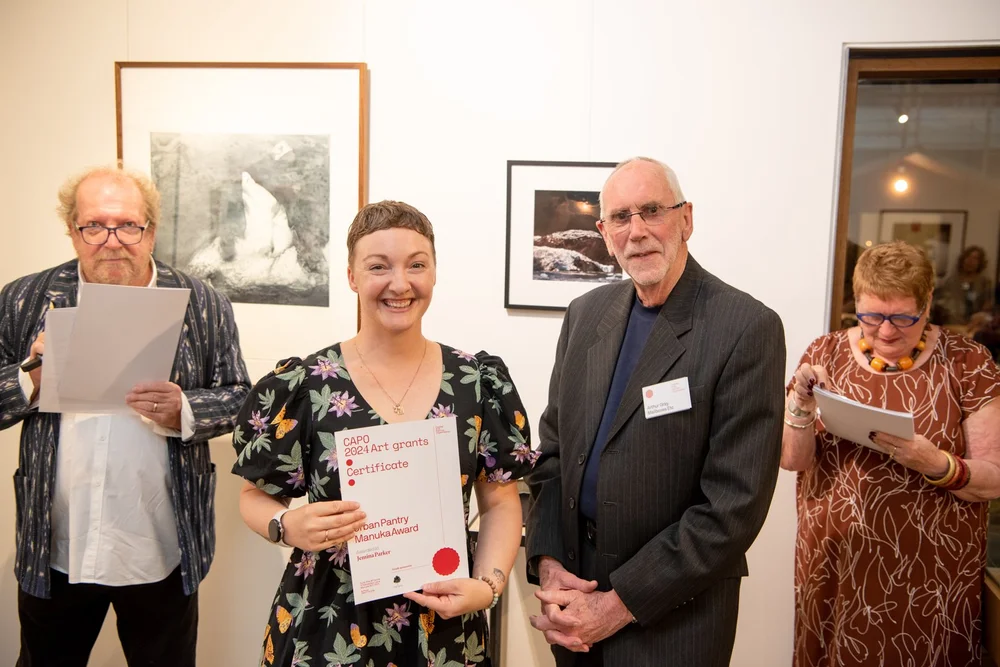�You can tell the history of jazz in four words: Louis Armstrong. Charlie Parker.� � Miles Davis Charlie Parker, who lived for all of 34 very full years, was easily one of the most if not the most influential...
�You can tell the history of jazz in four words: Louis Armstrong. Charlie Parker.� � Miles Davis
Charlie Parker, who lived for all of 34 very full years, was easily one of the most if not the most influential jazzmen who ever picked up a horn. Wikipedia: �Parker was a highly influential soloist and leading figure in the development of bebop,�a form of jazz characterized by fast tempos,�virtuosic�technique, and advanced harmonies.
He was a virtuoso and introduced revolutionary rhythmic and harmonic ideas into jazz, including rapid passing chords, new variants of altered chords, and chord substitutions. Primarily a player of the�alto saxophone, Parker�s tone ranged from clean and penetrating to sweet and somber.�
A little history from his website: �Born in Kansas City, Kansas on August 29, 1920, Parker cut his musical teeth hanging out in the alleyways behind the nightclubs lining 12th Street in Kansas City, Missouri where Count Basie, Lester Young, Mary Lou Williams and other jazz legends engaged in marathon jam sessions. His father was a pianist, dancer, and singer on the Theatre Owners Booking Association (T.O.B.A.) circuit.� (This was the vaudeville circuit for African-American performers in the 1920s.)
In 1936, Parker traveled with a band from Kansas City to the Ozarks for the opening of Clarence Musser�s Tavern south of Eldon, Missouri. They got into a car accident and Parker broke three ribs and fractured his spine. The accident led to Parker�s ultimate troubles with painkillers and opioids, especially heroin. Parker struggled with drug use for the rest of his life.
In that same year, Parker sat in a jam session at Kansas City�s Reno Club and screwed up while soloing on �Honeysuckle Rose.� Drummer Philly Joe Jones showed his displeasure by tossing his cymbal at Parker�s feet. After being laughed off the stage, Parker vowed to never be caught off guard at a jam session again. He spent the next summer playing at a resort in the Lake of the Ozarks, 150 miles southeast of Kansas City. Off -hours, he practiced diligently � up to 15 hours a day � learning all the chord changes and inversions.�
It was in 1939 in New York that Parker had his musical revelation. Playing through the chord changes on the song �Cherokee,� Parker discovered a new musical vocabulary and sound that shifted the course of music history.
He recalled: �I was jamming in a chili house on Seventh Avenue between 139th and 140th. It was December 1939. Now I�d been getting bored with the stereotyped changes that were being used all the time at the time, and I kept thinking there�s bound to be something else.
I could hear it sometimes but I couldn�t play it � Well, that night I was working over �Cherokee� and, as I did, I found that by using the higher intervals of a chord as a melody line and backing them with appropriately related changes, I could play the thing I�d been hearing. I came alive.�

Ultimately, Parker joined a young, up-and-coming band led by pianist Jay McShann. McShann gave Parker the freedom to blossom musically and personally. In April 1941, the band recorded for the Decca label in Dallas, Texas. Charlie�s 12 bar solo on �Hootie Blues� blew everybody away:
It was with McShann�s band that Parker was bestowed the nickname �Yardbird� while on a tour bus when a chicken in the middle of the road was run over and killed. Parker asked for the bus to be halted and collected the dead bird, which was plucked, dressed, and served for dinner later that night at a boarding house.
In 1942, Parker moved to New York with the McShann band where they �opened at the Savoy Ballroom in Harlem. Nightly broadcasts from the Savoy attracted a throng of young musicians who crowded the stage to hear Parker in person. After-hours, Parker, Dizzy Gillespie and other modernists pioneered bebop�a revolution in jazz.�
What is bebop? It was an an �offshoot of and reaction to big band swing music, which was dominated by propulsive dance rhythms. (A lot of these guys were sidemen in those bands.) In bebop, though, the rhythmic emphasis was switched from the bass drum to the more subtle hi-hat and ride cymbal, which allowed greater rhythmic fluidity.
This meant that soloists really had to be on their game, and know their scales inside out, especially when the chord changes came thick and fast. I recall reading that Miles Davis would take his crew into a club, flip a coin and when it landed, ask one of his band members what chord was playing. (If you�re jamming in rock, someone can say �Blues in E� and you can just play those scales all night. In jazz, you play the notes and arpeggios of the exact chord you�re on. It�s a lot tougher� � ME).
This new type of jazz was rejected by many of the established, traditional jazz musicians who disdained their younger counterparts. (And certainly the people who danced to jazz in the �40s moved on.) The beboppers responded by calling these traditionalists �moldy figs.� However, some musicians, such as Coleman Hawkins and Art Tatum were more positive about its development, and participated in jam sessions and recording dates in the new approach with its adherents.
Incredible as it is to believe right now, between 1942 and 1944 there was a two-year musicians� strike preventing them from recording. Much of early bebop was not captured and it got limited airplay.
It was not until 1945, when the recording ban was lifted, that Parker�s collaborations with Dizzy Gillespie, Max Roach, Bud Powell and others had a substantial effect on the jazz world. (One of their first small-group performances together was rediscovered and issued in 2005, a concert in New York�s Town Hall on June 22, 1945.) Bebop soon gained wider appeal among musicians and fans alike.
While in California in 1945, Parker cashed in his return ticket to buy heroin. He was jailed after setting bed sheets o fire and then running through the lobby drunk. He was committed to the now-defunct Camarillo State Mental Hospital for six months.�
When Parker received his discharge from the hospital, he was clean and healthy. Before leaving California, he recorded �Relaxin� at Camarillo� in reference to his stay in the mental hospital.
However, when he returned to New York he resumed his heroin usage.�Parker recorded extensively during the 1945-1955 period, both as a leader and as a sideman. He played a crucial role in numerous sessions, producing iconic recordings that showcased his virtuosic saxophone playing and improvisational skills. Some notable recordings from this time include �Ko-Ko,� �Ornithology,� �Yardbird Suite,� and �Confirmation.�
Wikipedia: Parker died on March 12, 1955, in the suite of his friend and patron Baroness Pannonica de Koenigswarter at the Stanhope Hotel in New York City. The official causes of death were lobar pneumonia and a bleeding ulcer, but Parker also had an advanced case of cirrhosis and had suffered a heart attack. The coroner who performed his autopsy mistakenly estimated Parker�s 34-year-old body to be between 50 and 60 years of age.
Parker�s early death came as no surprise to those who knew him well. Bandleader Jay McShann observed, �I knew it was going to happen sooner or later. The way he was goin� with that dope and all. He could only last so long.�
I leave you with these words from Parker�s website: �Parker�s brilliance and charisma also inspired dancers, poets, writers, filmmakers and visual artists. Jack Kerouac emulated Parker�s improvisational style in his poem �Mexico City Blues,� writing, �I want to be considered a jazz poet blowing a long blues in an afternoon jazz jam session on Sunday. I take 242 choruses; my ideas vary and sometimes roll from chorus to chorus or from halfway through a chorus to halfway into the next.�
Clint Eastwood paid homage to Parker�s tortured genius with his film Bird. In 1984, the Alvin Ailey Dance Company celebrated Parker with For �Bird� With Love. Artist Jean-Michel Basquiat honored Parker with many artworks including Charles the First.
In 2015, an opera based on his life Charlie Parker�s YARDBIRD made its debut at the Kimmel Center in Philadelphia. Parker�s vast influence continues today with hip-hop artists and other kindred musical spirits sampling his music, confirming that BIRD LIVES!�

Sources: Wikipedia, Parker website, UDiscover Music














